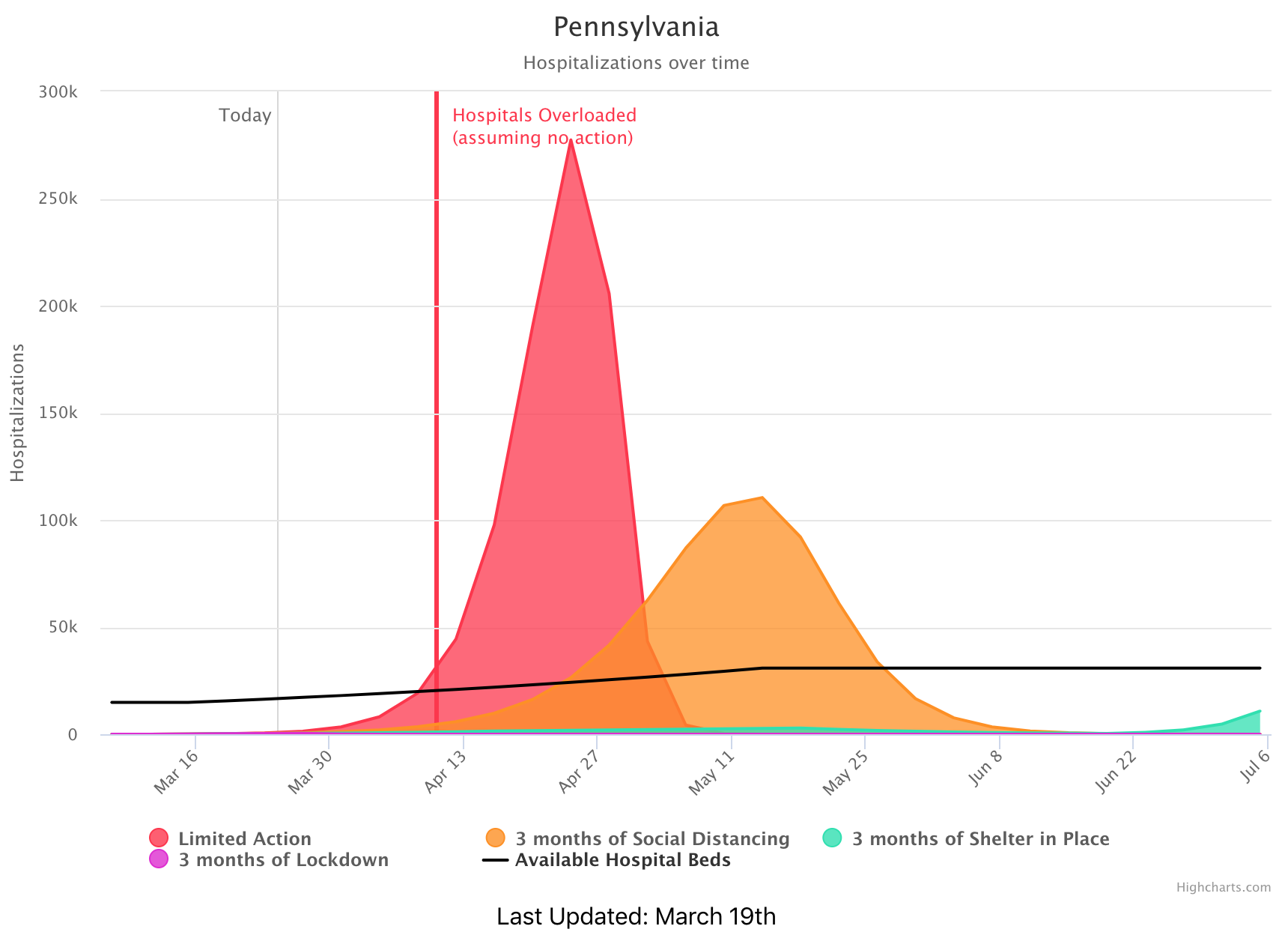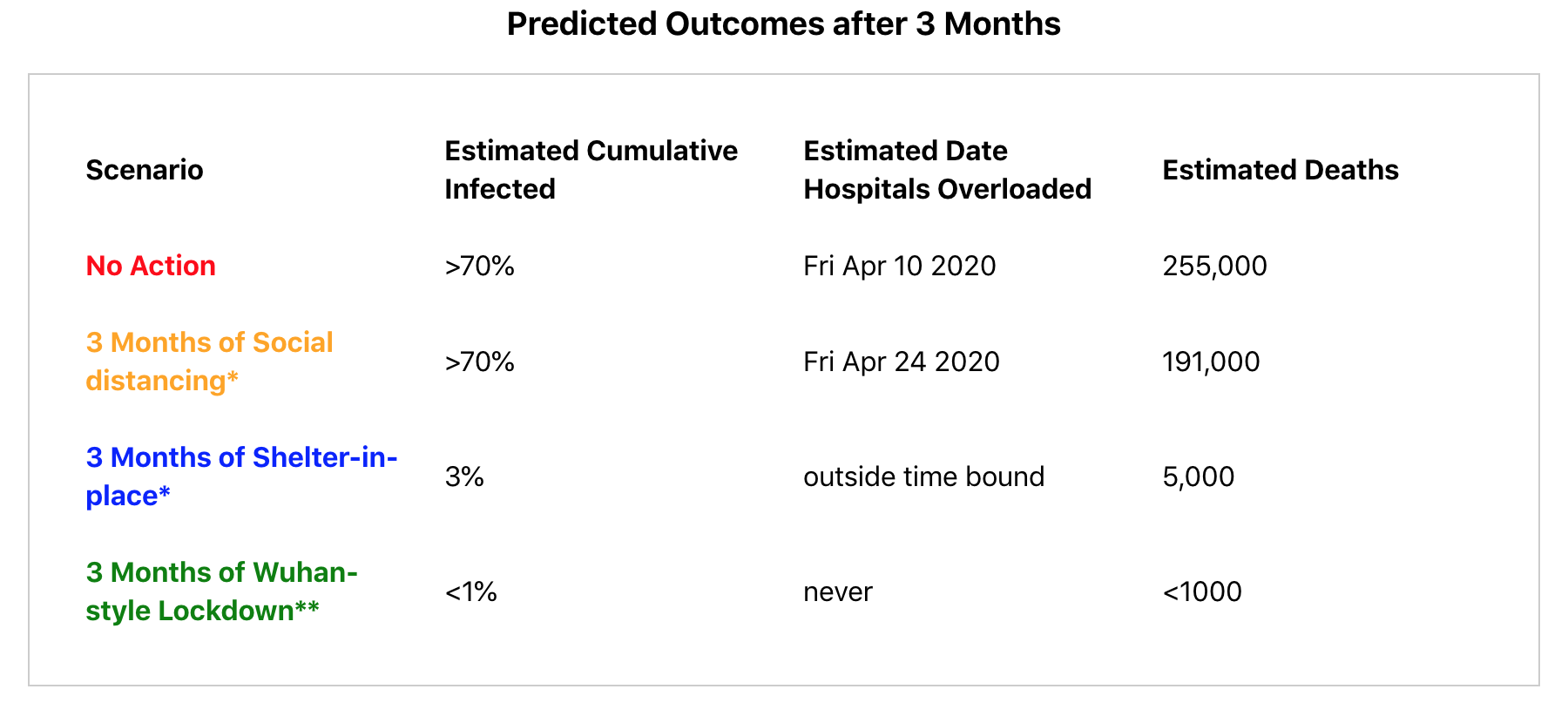The administration botched the early stages of the COVID-19 pandemic. Only within the last two weeks have states acted to begin enacting dramatic policies aimed at slowing the spread of the virus through their communities. But what policies the federal government has enacted are now threatened by an administration that prioritises the economy and market over the lives of the citizens it leads. The White House is discussing loosening all the policies of social distancing that health officials and scientists say are necessary to slow the spread of the virus.
This website from CovidActNow.org uses a model to predict the impact state by state of various policies on hospital overcrowding and ultimately deaths. The site opens with a map of the United States showing, broadly, what kind of response each state has followed (understanding things change rapidly these days).

That also serves as the navigation for a deep dive into those models for that state. Here I have selected my home state of Pennsylvania. It borders New Jersey and New York, two states that revolve, at least in part, around New York City, rapidly becoming the epicentre of the US outbreak, supplanting Seattle and the Pacific Northwest. What would the state face if we allowed things to keep going blithely on? What would happen if we merely socially distance for three months? What if we shelter in place for three months? (Emphasis added by me to show this is a long-term problem.)

Turns out that things don’t work out that well if we don’t stay at home, stop travelling, stop socialising. A table below the line charts shows the user how bad things go for the state in a table.

As you can see, for Pennsylvania, if we were to continue going on like normal, that would result in the deaths of almost the size of the entire city of Pittsburgh. Imagine if the city of Pittsburgh were suddenly wiped off the state map. That’s the level we are talking about.
Just three months of just social distancing? Well now you’re talking about wiping out just the cities of Allentown and Scranton.
Sheltering in place for three months, statewide? Well, thankfully Pennsylvania has lots of towns around the size of 5000 to choose from. Imagine no more Paoli, or Tyrone. Or maybe a Collegeville or Kutztown. An Oxford or a Media. Pick one of those and wipe it from the map.
Fundamentally the choice comes down to, do you want to restart your economy or do you want to save lives? Saving lives will undoubtedly mean unemployment, shattered 401k plans, bankruptcies, mental health problems, and cities, towns, and industries devastated without a tax base to provide for the necessary services. But, saving those jobs and dollars will means tens if not hundreds of thousands of deaths.
I don’t envy the state executive branches making these decisions.
Pennsylvania has chosen a middle road, if you will. It enacted a stay-at-home policy for seven counties: Allegheny (Pittsburgh); Philadelphia and its suburban counties of Bucks, Chester, Delaware, and Montgomery; and Monroe County. The rest of the state, primarily where the virus has yet to make any real significant appearance or appears to be spreading in the community, is not under the strictest of measures. This site’s model doesn’t account for a partial, statewide stay-at-home, but Pennsylvania’s choice is clearly a far superior one for people who prioritise lives over dollars.
Finally, to the people I have seen from my apartment gathering in parks, partying in outdoor spaces, that I can hear throwing house parties, please stop. If not for you, for the rest of us.
Credit for the piece goes to CovidActNow.org.
